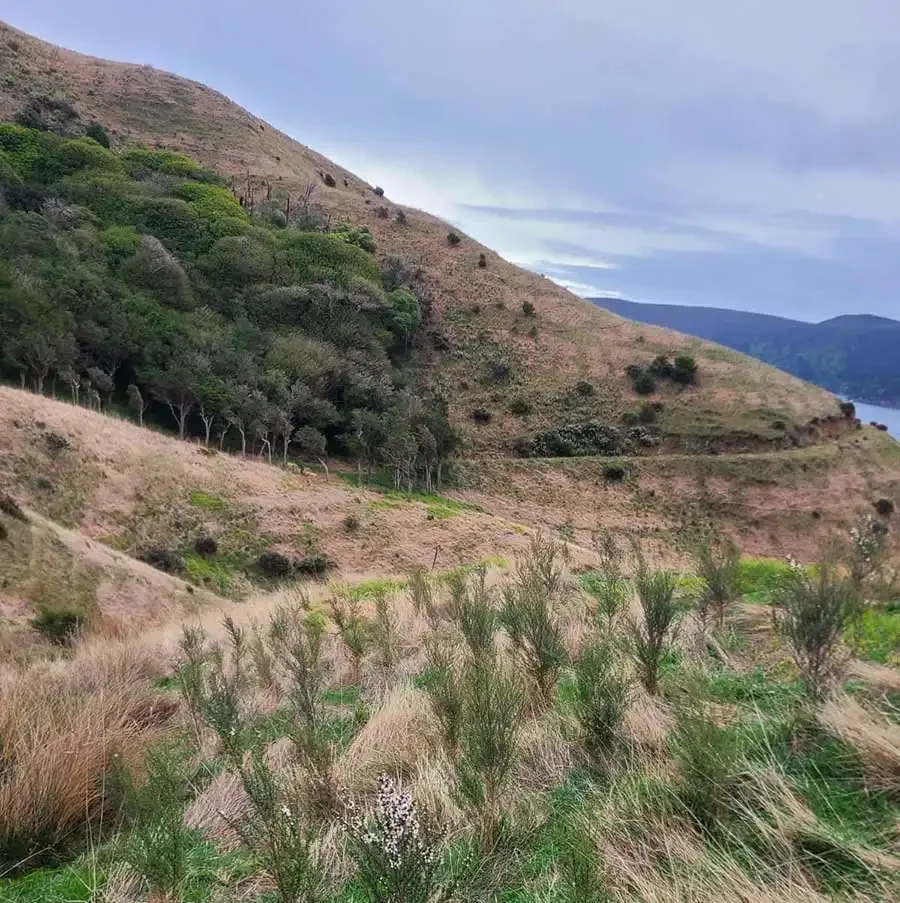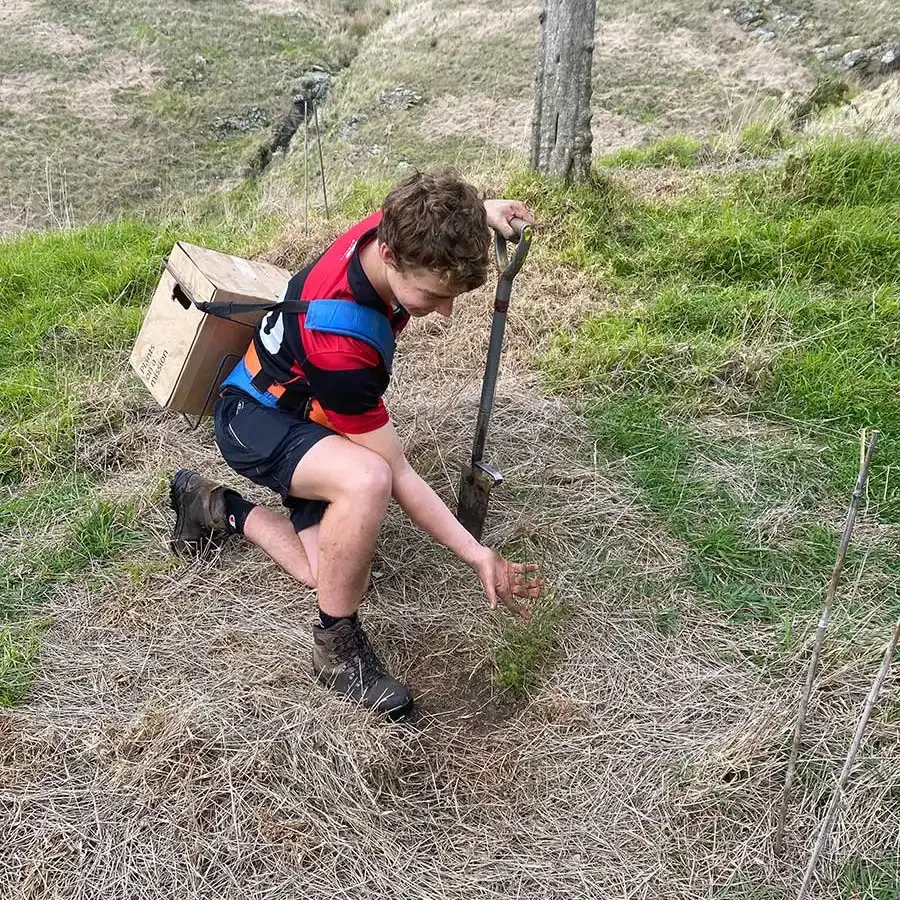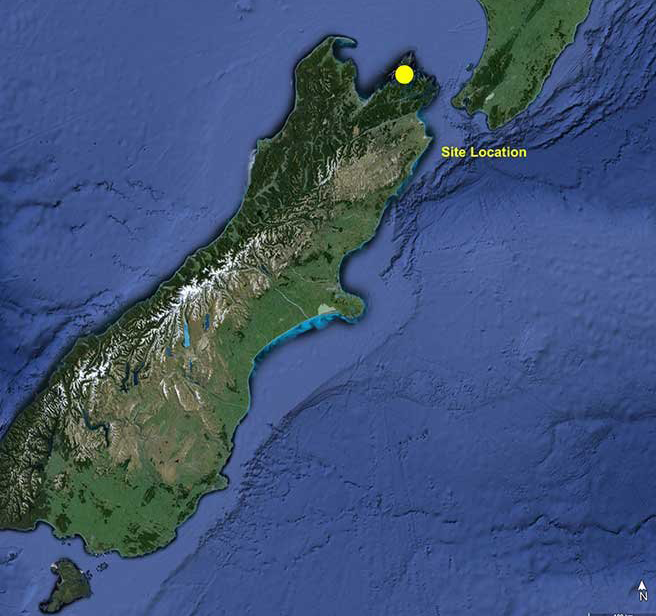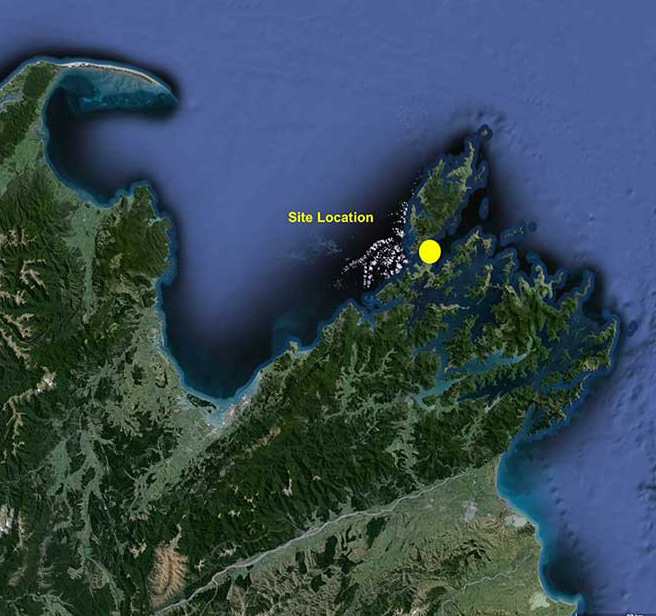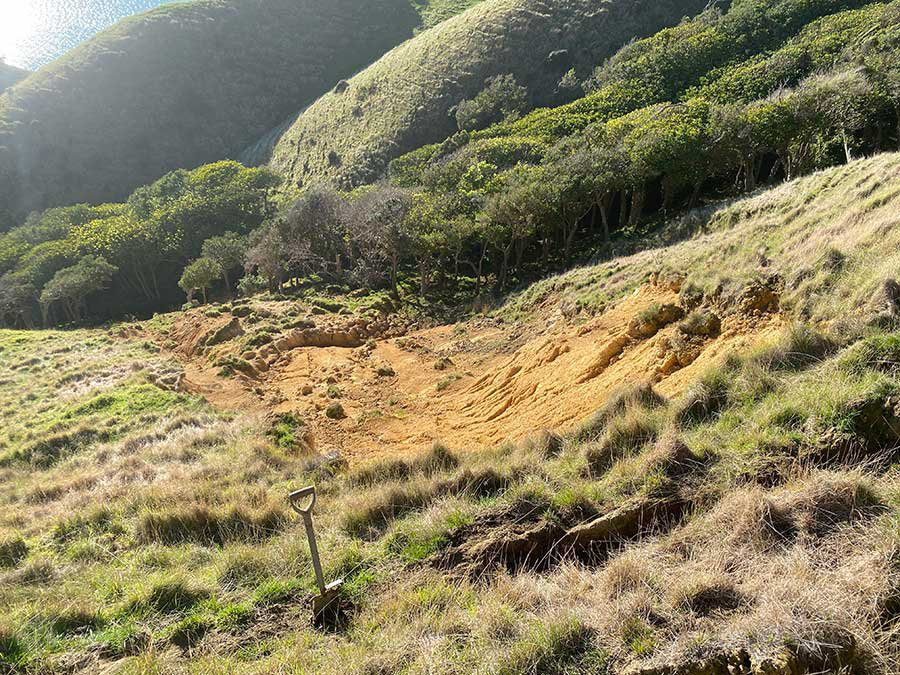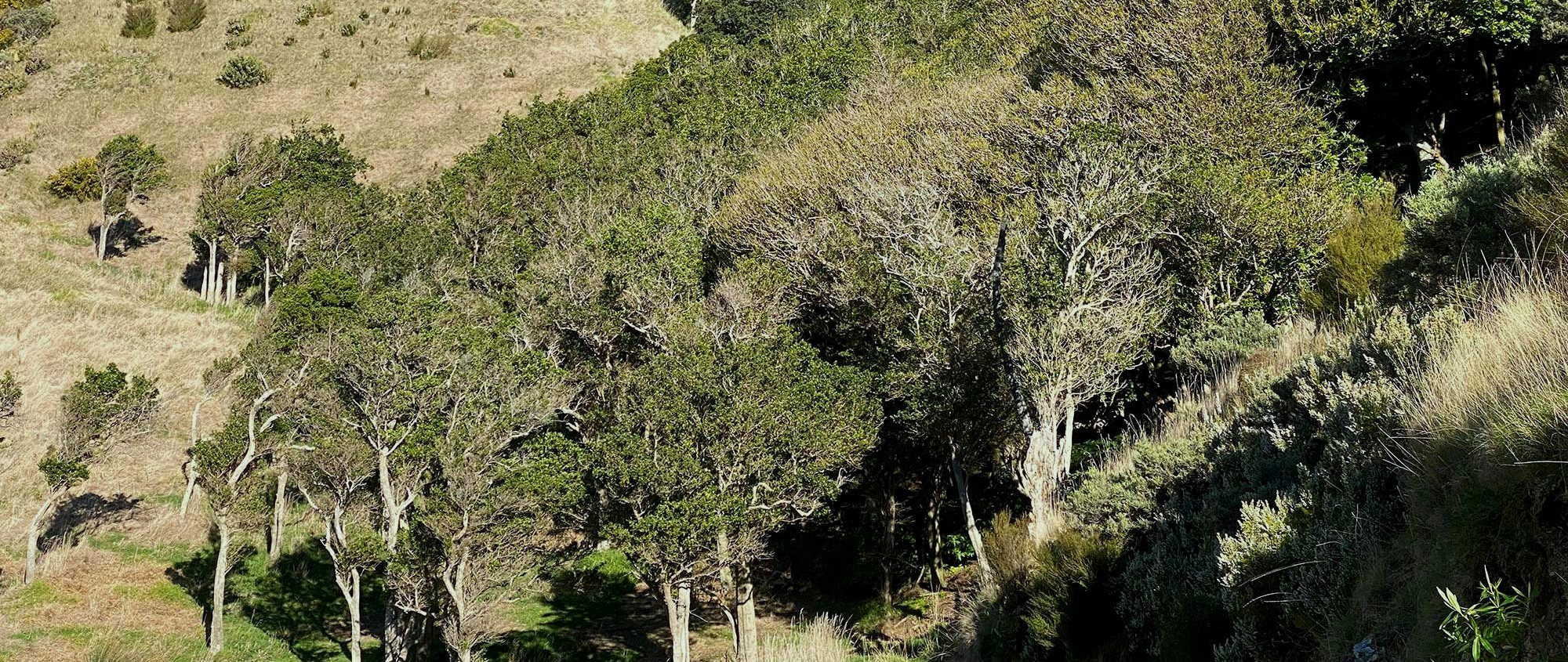
French Pass Project
Te Ngāhere -The Forest
Gerard Malcolm purchased the 333-hectare coastal Marlborough farm in 2022 with plans to gradually restore the native bush by retiring one paddock at a time. The dominant species being planted are manuka and kanuka as they are well suited hardy species that can survive in drier pasturelands. Currently the area registered in the NZ ETS is 12.6 hectares, this area will continue to grow as more planting is being undertaken each year.
This property straddles two ecological districts, D’Urville and Sounds. The divide between them runs along the main ridge crest of the Te Aumiti/French Pass peninsula. At this property there are 6 significant natural areas (SNAs), totaling to 14.5 hectares of ecological importance. These SNAs are pockets of remnant native bush, which will help with seed source and future regeneration processes.
Gerard is also controlling wilding pines through poisoning and animal pests on the farm through trapping. A key objective of this project is to reduce slips, erosion runoff and sedimentation into the surrounding seas.
Manuka seedlings planted in 2022
Te Tāngata -The People
The landowner is Gerard Malcolm.
George Malcolm and seedling just planted
The French Pass Project is located in Marlborough, South Island.
Wāhi - The Location
Technical Stuff
The French Pass Project is being undertaken under the Permanent Forest Category of the New Zealand Emissions Trading Scheme. The project issues New Zealand Units (NZUs) based on New Zealand Government rules for carbon sequestration rates by indigenous forest.
Once the NZUs are sold to a carbon offset buyer, they are cancelled in the New Zealand Emissions Trading Registry so they cannot be used by (or sold to) anyone else.
French Pass Project
Project Name
333 ha
Project Area
Project Owner
Gerard Malcolm
Landowner
Project Developer
Marlborough, New Zealand
Project Location
Grazing land
Baseline Scenario
Permanent forest protection
Project Scenario
Afforestation/reforestation (A/R): Enhanced natural regeneration
Activity Type
Carbon sequestration; biodiversity conservation; water quality protection; climate resilience
Project Benefits
33,500
Trees Planted
TBC
Carbon Credits Issued
New Zealand Emissions Trading Scheme - Permanent Forest Category
Carbon Credit Standard
Ministry for Primary Industries
Verifier
Carbon Credit Registry
Credits available for Business Clients
Carbon Credit Status
Whāia Te Pūtea - Follow The Money
Conservation costs money. The main cost elements are:
Establishing a forest. This forest was established by plantation.
Conservation management costs. This includes pest and weed control, forest monitoring, and the administration of the carbon project (carbon returns, registry account management and general administration).
Opportunity costs. This is the revenue that the landowner has given up to enable forest conservation to happen. In this project the landowner gave up revenue from pastoral farming - revenue that would normally be used to make a living off the land.
Carbon credit revenue goes to cover these costs.
Planting around slip zone

